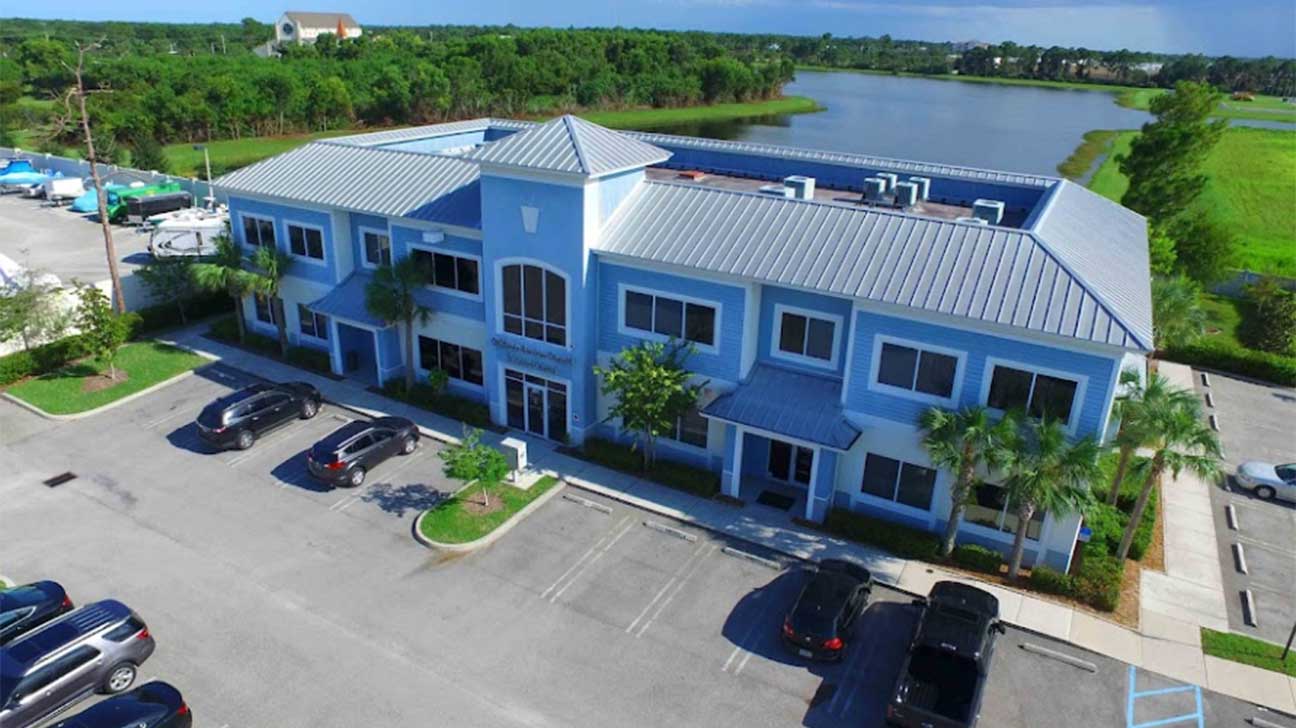
The United States faces a severe drug addiction crisis, with millions of people suffering from substance use disorders (SUDs) each year. Drug addiction is a complex disease that affects individuals, families, and entire communities. The consequences of substance abuse extend beyond personal health issues, impacting the economy, public safety, and healthcare systems.
Understanding the scale of drug addiction is crucial for addressing this growing problem, allocating necessary resources, and helping individuals receive the treatment they need.
This article provides a detailed analysis of drug addiction in the U.S., covering:
- The number of drug addicts and statistical insights
- The most commonly abused substances
- The demographic distribution of addiction
- Factors contributing to substance abuse
- The impact of drug addiction on society
- Effective solutions and treatment options
If you or someone you love is struggling with drug addiction, call Addiction Helpline America at (844) 561-0606 for confidential support and treatment options.
Call Now – Your Journey to Recovery Begins Today!

Take the first step towards a healthier life! Call now to connect with our compassionate team and start your recovery journey today. Your path to healing awaits!
Our recovery specialists are available 24/7 to provide support, and all calls are confidential and free. Reach out anytime – we’re here to help!
How Many People Struggle with Drug Addiction in the U.S.?
Statistics on Drug Addiction in the U.S.
According to the latest data from the National Survey on Drug Use and Health (NSDUH) and the Centers for Disease Control and Prevention (CDC):
- Over 46 million Americans aged 12 and older had a substance use disorder (SUD) in 2022.
- 24 million individuals suffered from drug addiction, while the rest battled alcohol addiction or both.
- Approximately 107,000 people died from drug overdoses in 2022, a record-high number largely due to synthetic opioids like fentanyl.
- Only 10% of people with SUD receive treatment, leaving millions without the help they need.
- Substance abuse costs the U.S. economy over $600 billion annually, including healthcare costs, lost productivity, and criminal justice expenses.
These statistics highlight the urgent need for better prevention, treatment, and policy changes to address the addiction crisis effectively.
Most Commonly Abused Drugs in the U.S.
Stories of Resilience Among Drug Addicts
Different substances contribute to addiction, each with unique risks and challenges.
1. Opioids (Including Prescription Painkillers, Heroin, and Fentanyl)
The opioid epidemic remains the most serious drug crisis in the U.S.
- Over 9 million people misused opioids in 2022.
- Fentanyl, a synthetic opioid 50 times stronger than heroin, is now responsible for over 70% of overdose deaths.
- Many individuals become addicted to prescription painkillers like OxyContin, Vicodin, and Percocet, then transition to heroin or fentanyl when prescriptions run out.
2. Methamphetamine (Meth)
- 2.5 million Americans used methamphetamine (meth) in 2022.
- Meth is highly addictive and causes severe damage to the brain and body.
- Many overdoses involve a mix of meth and fentanyl, making them even more deadly.
3. Cocaine
- 4.8 million Americans used cocaine in 2022, including crack cocaine.
- Cocaine is widely abused in urban areas and often associated with violent crime and drug trafficking.
4. Marijuana
- Approximately 52 million Americans reported using marijuana in 2022.
- While legal in many states, heavy marijuana use can lead to dependence and withdrawal symptoms.
5. Hallucinogens and Club Drugs
- LSD, MDMA (Ecstasy), and ketamine are widely used, especially by young adults in party scenes.
- Over 7 million people reported using hallucinogens in 2022.
Demographic Breakdown of Drug Addiction in the U.S.
1. Addiction by Age Group
Drug addiction affects all age groups, but some are more vulnerable than others.
- Teens (12-17 years old): About 2.3 million teenagers had a substance use disorder in 2022. Early drug use increases the risk of long-term addiction.
- Young adults (18-25 years old): This age group has the highest rates of addiction, with over 8 million individuals affected.
- Adults (26+ years old): Around 36 million adults struggle with substance abuse, with many having long-term dependencies.
2. Addiction by Gender
- Men are more likely to struggle with drug addiction than women, particularly with alcohol, cocaine, and opioids.
- Women face unique challenges in seeking treatment, including pregnancy-related concerns and societal stigma.
3. Addiction by Race and Ethnicity
- Native Americans and Black Americans experience higher rates of substance use disorders, partly due to systemic inequalities, economic struggles, and historical trauma.
- White Americans account for the highest number of opioid overdose deaths, largely due to the widespread overprescription of painkillers in suburban and rural areas.
Factors Contributing to Drug Addiction in the U.S.
1. Mental Health and Trauma
- Depression, anxiety, PTSD, and other mental health disorders increase the likelihood of drug addiction.
- Many individuals use drugs to self-medicate emotional pain, leading to dependence.
2. Family and Genetic Factors
- A family history of addiction significantly increases the risk.
- Children who grow up in households where drug use is common are more likely to develop substance use disorders.
3. Social and Environmental Influences
- Poverty, peer pressure, and exposure to drug use at a young age play significant roles in addiction.
- High drug availability in certain neighborhoods leads to increased substance abuse rates.
4. Prescription Drug Misuse
- Many addictions begin with legally prescribed medications, especially opioids and benzodiazepines.
- Long-term prescription use often leads to illicit drug abuse.
The Impact of Drug Addiction on Society
1. Economic Costs of Drug Addiction
- Drug addiction costs the U.S. economy over $600 billion annually.
- Employers lose billions due to reduced workplace efficiency and absenteeism.
2. Crime and Drug-Related Violence
- A large portion of violent crimes, including robberies and homicides, are linked to drug addiction and trafficking.
- Over 80% of people in U.S. prisons have a history of substance abuse.
3. Overdose Crisis and Public Health Emergency
- The fentanyl crisis has overwhelmed hospitals and emergency services.
- Harm reduction strategies, such as naloxone (Narcan) distribution, help prevent overdose deaths.
4. The Burden on Families and Communities
- Families of addicts experience financial strain, emotional distress, and broken relationships.
- Children of addicted parents face higher risks of neglect, abuse, and mental health disorders.
Find Hope and Healing: Call Us Now!
Take the first step towards a brighter future! If you or a loved one is seeking support for substance abuse, we are here to help. Call us today and let our dedicated team guide you to the right treatment options. Your path to recovery starts now!
- Connect with an expert addiction specialist 24/7/365
- Learn about treatment costs
- Arrange fast access to a treatment program
Request a Call
OR
Make a Call
Solutions: How Can We Combat Drug Addiction?
1. Expanding Access to Treatment
- Increasing the availability of rehab programs, medication-assisted treatment (MAT), and counseling is crucial.
- If you or someone you love needs help, call Addiction Helpline America at (844) 561-0606.
2. Strengthening Prevention Programs
- Educating youth about drug risks through school programs helps prevent early substance use.
- Community outreach programs provide support for at-risk populations.
3. Addressing Mental Health Issues
- Expanding access to mental health care can reduce self-medication with drugs.
- Integrated treatment approaches help treat both addiction and mental disorders.
4. Law Enforcement and Policy Changes
- Stricter regulations on opioid prescriptions help reduce addiction rates.
- Decriminalization of addiction and a focus on rehabilitation rather than punishment can improve recovery outcomes.
The Role of Government and Policy in Addressing Drug Addiction
The U.S. government plays a critical role in combating drug addiction through policies, funding, and enforcement efforts. Addressing the drug crisis requires a multi-faceted approach involving prevention, treatment, harm reduction, and law enforcement.
Federal and State Government Initiatives
The federal government has taken several steps to address the addiction epidemic, including:
- The SUPPORT Act (2018): Expanded access to addiction treatment and prevention programs.
- The Comprehensive Addiction and Recovery Act (CARA): Encouraged evidence-based treatment and overdose prevention strategies.
- Medicaid and Medicare Expansions: Increased funding for addiction treatment services.
State governments have also implemented local initiatives, such as:
- Expanding access to Naloxone (Narcan) to reverse opioid overdoses.
- Safe syringe exchange programs to reduce the spread of diseases like HIV and Hepatitis C.
- Funding for community rehab centers to provide affordable addiction treatment.
The Role of Law Enforcement
Law enforcement agencies have shifted from a punitive approach to a rehabilitative one, focusing on:
- Drug courts that offer treatment instead of incarceration.
- Diversion programs to help non-violent drug offenders enter rehab instead of prison.
- Crackdowns on fentanyl and illegal drug trafficking to reduce overdose deaths.
Despite these efforts, gaps in treatment accessibility and funding remain, making continued policy changes essential for reducing addiction rates.
The Connection Between Homelessness and Drug Addiction
There is a strong correlation between homelessness and drug addiction, with substance abuse both contributing to and resulting from homelessness.
How Drug Addiction Leads to Homelessness
- Job loss due to substance abuse leads to financial instability and eviction.
- Family breakdowns and lack of support leave individuals without housing.
- Criminal records from drug-related offenses make it difficult to find employment and housing.
How Homelessness Increases Drug Addiction Risks
- Living on the streets leads to increased stress and trauma, which can drive individuals to use drugs as a coping mechanism.
- Lack of access to medical care and rehab services makes it difficult for homeless individuals to recover.
- High exposure to drug culture in homeless communities encourages ongoing substance use.
Solutions to Address Addiction Among Homeless Individuals
- Housing-first programs provide stable living conditions before addressing addiction.
- Mobile addiction treatment units bring healthcare to homeless individuals.
- Job training and rehabilitation programs help people reintegrate into society.
Without long-term support systems, many homeless individuals remain trapped in a cycle of addiction, poverty, and health problems.
The Importance of Early Intervention and Education in Preventing Drug Abuse
Prevention is the most effective way to reduce drug addiction rates. Early intervention and education play a vital role in keeping individuals from developing substance use disorders.
The Role of Schools and Community Programs
- School-based prevention programs like D.A.R.E. educate students about the dangers of drug use.
- After-school activities and mentorship programs provide healthy alternatives to substance abuse.
- Community workshops raise awareness about addiction and encourage open discussions.
Parental Influence on Preventing Addiction
- Open communication about drug risks helps children make informed choices.
- Setting clear rules and expectations reduces the likelihood of substance experimentation.
- Monitoring teen activities and friendships can prevent exposure to drug use.
Medical and Psychological Early Interventions
- Screening for mental health issues can prevent self-medication with drugs.
- Early counseling for at-risk youth reduces the chances of addiction.
- Medical professionals should carefully monitor opioid prescriptions to prevent misuse.
Investing in education and early intervention can significantly reduce future drug addiction rates, saving lives and resources in the long run.
Call Now – Your Journey to Recovery Begins Today!

Take the first step towards a healthier life! Call now to connect with our compassionate team and start your recovery journey today. Your path to healing awaits!
Our recovery specialists are available 24/7 to provide support, and all calls are confidential and free. Reach out anytime – we’re here to help!
Conclusion
The U.S. drug addiction crisis continues to escalate, affecting millions of lives. Understanding the scale of addiction and its causes is essential for creating effective solutions.
If you or someone you love is struggling with addiction, don’t wait to seek help. Call Addiction Helpline America at (844) 561-0606 for confidential support and treatment options.
Who is most at risk for drug addiction?
Young adults (18-25 years old), individuals with mental health disorders, and those with a family history of addiction are at higher risk.
How does drug addiction impact families?
Drug addiction can lead to financial stress, emotional trauma, and broken relationships. Children of addicted parents often experience neglect and long-term psychological effects.
Where can I get help for drug addiction?
If you or a loved one needs help, contact Addiction Helpline America at (844) 561-0606 for professional guidance and support.
How many people in the U.S. have a drug addiction?
Over 24 million Americans struggle with drug addiction, and 46 million have a substance use disorder.
Our helpline is 100%
free & confidential
If you or someone you care about is struggling with drug or alcohol addiction, we can help you explore your recovery options. Don’t face this challenge alone—seek support from us.
Programs
Resources
Will my insurance
cover addiction
treatment?
We're ready to help
Find the best
drug or alcohol treatment
center
Are you or a loved one struggling with addiction? Call today to speak to a treatment expert.















